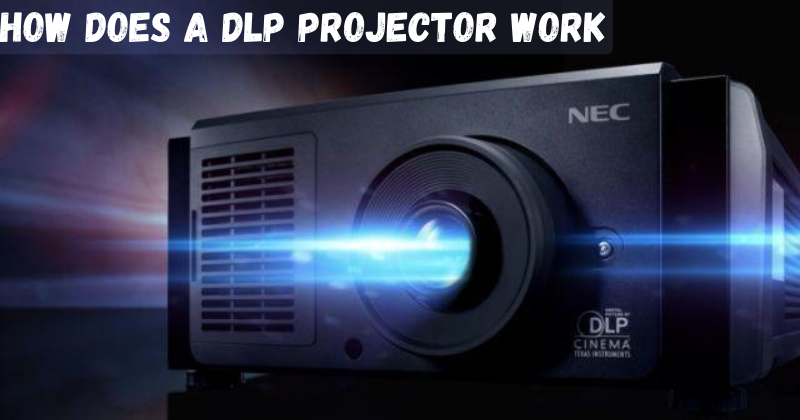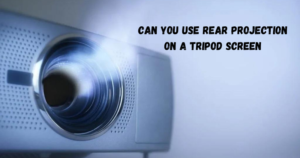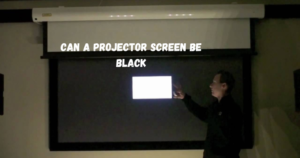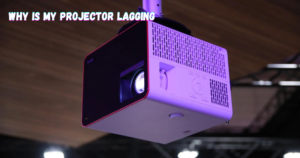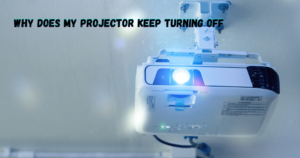Are you considering purchasing a DLP projector? It’s an exciting investment, and a great tool for viewing images and films.
But how does it work? To help your research endeavours, we’ve assembled the ultimate guide to understanding how DLP projectors deliver crisp, clear imagery in high-definition quality.
Read on to learn about the key components of a DLP projector, breakdown of their construction process, and what makes them stand out from other versions available today.
Introducing the Basics of DLP Projectors
A DLP (Digital Light Processing) projector is a digital imaging device that amplifies an image or video displayed onto a large projection screen. The projector uses light from a bulb to pass the display through a chip with thousands of tiny mirrors, which reflects the display onto the screen.
DLP projectors are typically used in larger theaters and auditoriums, but can also be used in a home theater setup.
Additionally, DLP projectors are known for their high-contrast images and excellent color accuracy. This is due to the chip’s micro-mirrors reflecting more light onto the screen, resulting in a brighter image with greater detail.
How Does A DLP Projector Work
A DLP projector is composed of several components, each serving a specific function.
The primary component is the Digital Micromirror Device (DMD). This device contains thousands of tiny mirrors that are arranged in a rectangular grid pattern, typically consisting of 1,920 x 1,080 pixels for an HD image. Each mirror can move independently from the others and can be switched on or off very quickly.
The DMD is illuminated by a lightbulb located in the projector’s optics path and reflects an image onto the projection screen. Each time a mirror is turned on, it reflects light onto the screen. This process continues until all of the mirrors have been activated, creating an HD image with incredible clarity and detail.
Finally, the DLP projector uses a color wheel to add additional color accuracy to the image. The wheel is made up of red, blue, and green segments that rotate in front of the light source at an incredibly fast speed. This process creates a rainbow effect on the projection screen that blends together in order to create true-to-life colors.
Examining the Different Color Wheels Used in DLP Projectors
DLP projectors are available in a variety of color wheel options, each offering its own unique features and benefits. The most popular models include single-chip DLP projectors that feature a six-segment RGBRGB wheel, while dual-chip DLP projectors typically have an eight-segment RGBCMY wheel.
The six-segment wheel is the standard in most single-chip projectors, as it provides a wide range of colors while still maintaining excellent contrast and color accuracy. The eight-segment wheel, on the other hand, offers extended color accuracy due to its additional segments but can also cause rainbowing or banding if not calibrated correctly.
It’s important to note that the type of color wheel used in a DLP projector largely depends on its purpose. Home theater systems tend to use six-segment wheels, while commercial solutions typically use eight-segment wheels for superior image quality.
Analyzing the Pros and Cons of DLPs compared to Other Types of Projectors
Here are the main advantages of using a DLP projector:
- Excellent image quality with vivid colors and high contrast
- Greater brightness than other projectors
- Highly efficient, consuming less power than competing models
- No color separation or rainbow effect
- Rapid response times for fast moving images
- Longer lamp life compared to other types of projectors
However, DLP projectors can also have some drawbacks depending on the model and usage. These include:
- Image ghosting or streaking due to rapid movement
- Visible pixels at certain viewing angles
- Limited model options available
Overall, DLPs offer a great combination of features and performance for both home theater and commercial applications. Their vibrant colors, high contrast, and long lamp life make them an ideal choice for any type of viewing.
Investigating Brightness Ratings and Contrast Levels of DLP Projectors
When it comes to image quality, brightness is an important consideration when selecting a DLP projector. A brighter projector can display images with greater detail and clarity, while a dimmer one can be difficult to see in a large room or theater.
The brightness of a projector is measured in Lumens or ANSI lumens. Most DLP projectors have a brightness range of 1,000 to 3,500 lumens.
In addition to brightness, the contrast ratio of a projector can also affect image quality. The contrast ratio indicates how much brighter whites appear compared to blacks on the screen. The higher the number, the better the image will appear in dark or dimly lit environments.
Many DLP projectors have a contrast ratio of 10,000:1 or higher, providing superb image quality even in darkly lit rooms.
Understanding Technical Specifications and Choosing the Right DLP for Your Needs
Before purchasing a DLP projector, it’s important to understand the different technical specs and features of each model. Here are some factors to consider when selecting the right projector for your needs:
- Resolution – Determine how much detail you need in your image. HDTV resolution is 1080p (1,920 x 1,080 pixels) and 4K resolution is 2160p (3,840 x 2,160 pixels).
- Brightness – Consider the size of the room and how much ambient light it receives. The brighter your projector, the clearer the images will appear.
- Contrast Ratio – Higher contrast ratios provide better image clarity in darkly lit rooms. Look for projectors with a ratio of 10,000:1 or higher.
- Color Wheel – Six-segment wheels are standard in most single-chip projectors while eight-segment wheels can produce better color accuracy.
- Connectivity – Ensure that your projector has the necessary ports for connecting your various devices. HDMI and USB connections are often available on most models.
By researching the available features and specifications of DLP projectors, you can make an informed decision on the right model for your needs.
These are just a few key facts about how DLP projectors work and why they can be so beneficial for viewing images or watching movies. With their superior image quality, long lamp life, and efficient performance, DLPs offer a great solution for both home theater and commercial applications.
FAQs
Do DLP projectors require a lot of maintenance?
No, DLP projectors are relatively low-maintenance compared to other types of projectors. The light source typically lasts up to 10,000 hours before needing to be replaced, and they require minimal cleaning or adjustment over time.
How do I know what resolution is best for my needs?
The resolution of your projector depends on how much detail you need in the image. HDTV resolution is 1080p (1,920 x 1,080 pixels) and 4K resolution is 2160p (3,840 x 2,160 pixels). If you’re looking for a sharper display and more vibrant colors, then 4K resolution would be a better choice.
What is the contrast ratio and why does it matter?
The contrast ratio of a projector indicates how much brighter whites appear compared to blacks on the screen. A higher number provides better image clarity in darkly lit rooms, so look for projectors with a contrast ratio of 10,000:1 or higher. This will ensure that you get superior image quality even in dim environments.
Conclusion
In conclusion, a DLP projector works by using a semiconductor chip to project an image onto a screen.
This semiconductor chip is made up of hundreds of thousands of microscopic mirrors, and these tiny mirrors become the pixels that the projector needs to create the image.
By reflecting light rays at different angles and magnifications, these micro-mirrors can produce large or small colors in any desired definition.
Thanks to this technology, today’s DLP projectors offer stunning brightness levels and a wide range of color representations.
They also have low total cost of ownership and extended lifetime, making them perfect for any business or educational organisation looking for high quality projection solutions.
Now that you know how a DLP projector works, take some time to explore the benefits it offers to ensure you make the most out of your investment.
